There are two methods used to manufacture latex, the Dunlop process and the Talalay process. The Dunlop process has been in use for over 90 years, the Talalay process is a much newer process introduced within the last few years. The Dunlop latex process is normally used to manufacture 100% pure and natural latex from the sap of the rubber tree. The Talalay latex process is more often used to combine natural and synthetic latexes, usually with 70% natural latex and 30% synthetic rubber, or to combine natural latex with fillers made from inert raw materials to bulk out the latex foam. It’s a whole lot cheaper to make latex padded out with fillers, and a whole lot more profitable for the manufacturer who makes it. Our 100% pure and natural latex products do not use synthetic fillers!
Talalay Vs. Dunlop Latex
Pure Dunlop latex is generally denser, heavier, and more durable and resilient than Talalay latex. This is especially beneficial if mattresses are going to be subjected to high levels of activity. Talalay latex is softer, therefore you tend to sink more in the Talalay material. The Dunlop Natural material keeps you suspended if you will, on top of the mattress. Side sleepers especially seem to respond better to the Dunlop method, the pressure point reduction and weight distributing qualities of the latex being clearly superior. You don’t bottom out on it, and you can easily turn from side to side effortlessly. This is important when you consider that a common complaint of memory foam users and Talalay process mattress owners, is that the sinking effects of these materials can cause you to feel like you’re stuck in a rut.
Pure Latex made using the Dunlop process retains the intrinsic green strength of natural latex. It possesses excellent dynamic properties such as resilience and high elasticity, excellent tensile properties and has the highest recovery to original shape from deformation. There is no man-made substance which can imitate such properties, and provide support without losing sleeping comfort. Natural Latex is biodegradable when it is disposed off to land fill. It is environmental friendly.
Synthetic latex fillers are fine particles of chemically inert materials. They are commonly used to enhance the hardness of latex foam and because they replace some of the natural latex, production costs are lower. The most common fillers are China Clay (Kaolin clay), calcium oxide, or titanium dioxide. The insertion of fillers destroys the anti-bacterial properties of Natural Latex. Fillers will encourage the growth of fungus and bacteria, which in turn will encourage dust mites. Inorganic fillers reduce the tensile properties of the latex, in particular elongation at break. They suppress resilience, promote high long term compression deformation, and reduce the ability to recover to original shape.
 Latex Mattress Australia uses only 100% pure and natural latex sourced from Malaysia and manufactured using the Dunlop process. The latex is independently tested and certified by the Eco Umweltinstitut as pure and natural. This German based institute is a world-renowned authority on environmental and health related toxicity issues.
Latex Mattress Australia uses only 100% pure and natural latex sourced from Malaysia and manufactured using the Dunlop process. The latex is independently tested and certified by the Eco Umweltinstitut as pure and natural. This German based institute is a world-renowned authority on environmental and health related toxicity issues.
A table comparing Pure Natural Latex with Synthetic Latex, and Latex with Fillers:
Pure Natural Latex
|
Natural Latex with Fillers
|
Synthetic (SBR) Latex
|
|
| Physical Appearance | Creamy white natural Latex colourExtremely fine foam structure
Sweet odour of natural latex when fresh |
Colour varies according to the type of filler used. Titanium dioxide for example will give the foam a dull white colour. Kaolin clay produces a grey foam.Coarse structure
The sweet fresh natural latex odour is suppressed by fillers |
Artificial White colour Coarse structure with large pores and thin bubble cell wall |
| Structural Properties | Open cell systemExtremely fine structure – strong gel strength and excellent support capability. | Open cell systemCoarse foam structure – filler reduces gel strength and causes poor support capability. | Open cell systemLarge pores, poor gel strength and poor support capabilities |
| Costituent Composition | 100% Pure Natural Latex | 70 – 85% natural latex, 15 – 30% fillers. Fillers are added to increase hardness and as a cheapener to reduce the cost of production. | 70 – 85% SBR (Styrene Butadiene Rubber).15 – 30% fillers may be added to increase hardness and to act as a cheapener. |
| Dynamic Properties | Excellent, with good resilience, low hysteresis, low permanent set, high elasticity, excellent tensile properties and highest recovery to original shape after deformation. Excellent tear resistance. | Poor Inorganic fillers reduce tensile properties, particularly elongation at break. They also suppress resilience, promote high permanent set and reduce its ability to recover to the original shape. Filled latex is as good as ‘dead’ foam. | Very poor as SBR foam does not recover its original shape after compression as quickly or as much as natural latex foam. It is nowhere close to the resiliency natural latex can provide. SBR foam has poor tensile properties and weak tear strength. |
| Durability | Natural Latex Foam is durable. According to research a pure Natural Latex Foam without fillers can easily last 25 years. | Natural latex with fillers is not as durable as pure latex. The service life of a product made from latex with fillers is not expected to exceed 5 years. | Synthetic Latex foam loses its strength after a short period of use. It is not as durable as Natural Latex foam in any way. |
| Environmental Considerations | Natural Latex is derived exclusively from pure, super clean, unadulterated natural rubber latex from trees. It is cultivated through new planting and replanting programmes from large scale plantations to ensure a sustainable supply of latex. | The environmentally friendly attributes of natural latex are suppressed by the presence of fillers, particularly when fillers such as calcium oxide or titanium dioxide are used. | Synthetic latex can be seen as an environmental hazard – it is a product of the petrochemical industry and it is contributing to the depletion of our non-renewable fossil resources. |
| Fire Hazards | When ignited, natural latex foam will produce a smoke that is largely composed of carbon | When ignited, filled natural latex foam produces toxic fumes from the decomposition of the filler | When ignited, synthetic latex foam produces smoke that contains toxic substances such as phenols, isocyanides, benzenes etc. |
| Anti-Bacterial Properties | Hypoallergenic, clean and healthy, Natural Latex Foam has inherent natural anti-bacterial properties that discourage the growth of bacteria and fungus. Without the assistance of bacteria and fungus, dust-mites are unable to digest dead skin cells from humans. Ultimately natural latex is inhospitable to dust-mites. | Hazardous and harmful – the insertion of fillers destroys the anti-bacterial properties of Natural Latex. It allows the growth of fungal and bacterial populations, which in turn encourages the growth of dust-mite populations. | Synthetic Latex has no anti-bacterial properties. Chemical additives in the form of anti-bacterial agents are often used to protect the foam from dust-mites. |
| Disposal | Disposal of natural latex foam would commonly be by biological decomposition in land-fill, preserving the ecological balance. | Fillers retard the efficacy of biological decomposition, besides generating toxic gases as the filler breaks down. | This foam cannot be broken down without the application of external energy, so biological breakdown does not occur. Disposal of these foams is often by burning, contributing to air pollution and climate change. |




